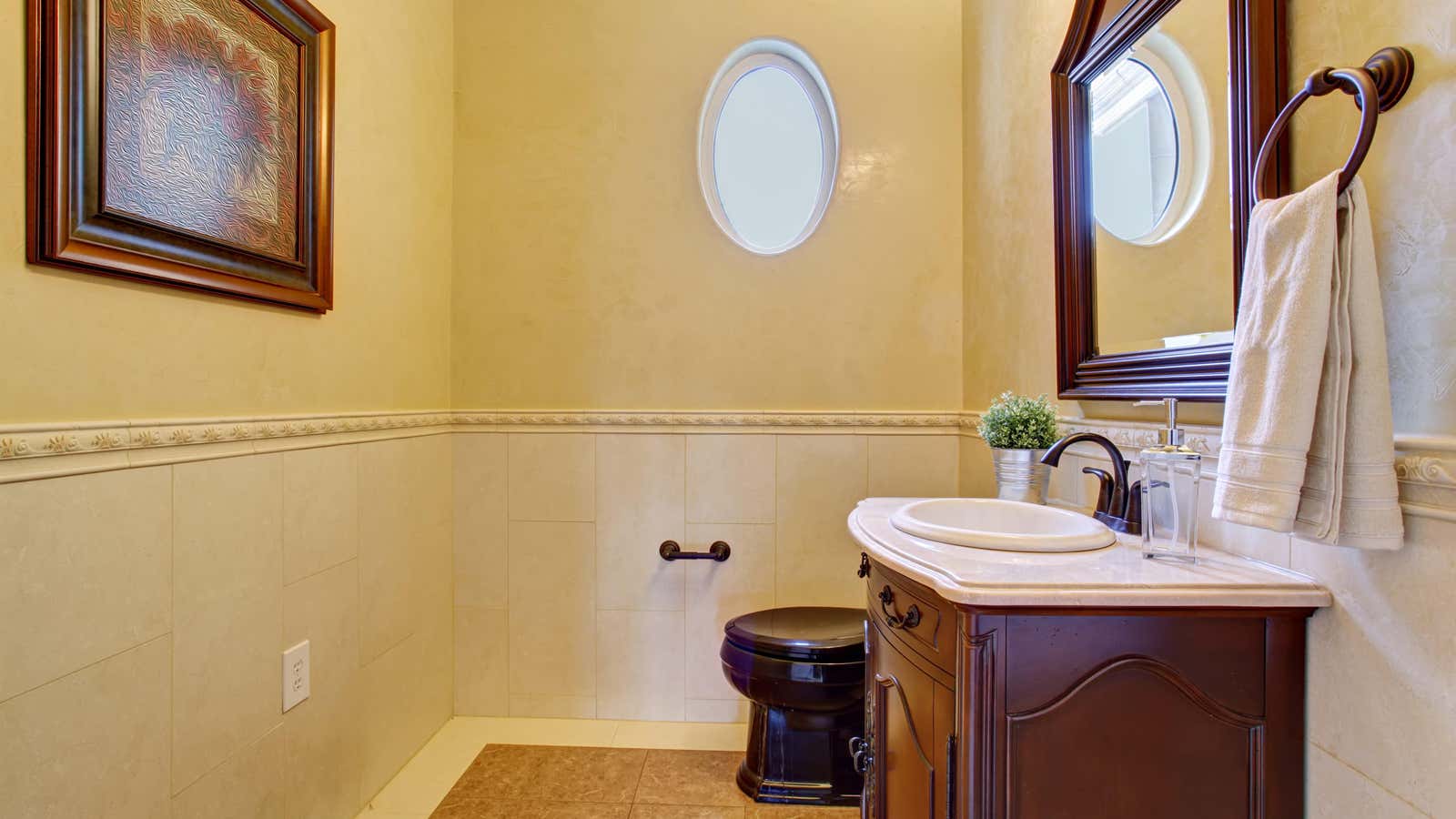Two Bathtubs Are Not Half Full, and Other Real Estate Bathroom Math You Need to Know

Last weekend we talked about the dimensions of home bathrooms – like what you get with a half bath versus a 3/4 or full bath. And while this information is necessary to decipher that terminology in property listings, there’s one more piece that isn’t exactly straightforward either: the total number of bathrooms in a home.
Even though we use fractions as a shorthand for describing the number of plumbing fixtures in a bathroom, you can’t just add up those fractions to calculate the total number of bathrooms in a house as it would appear on a property listing. In other words, two half baths are not equal to one full bath. Here are some tips on how to approach this and other real estate bathroom maths.
Calculation of the number of bathrooms in the house
There are some differences in how real estate agents count the total number of bathrooms in a home, but as a general rule, you start by adding up the number of complete bathrooms. This usually happens to be the first/integer in the list (before the decimal point or fraction).
Then it’s time to take into account 3/4, half and 1/4 baths – this is where things can get tricky. Fortunately, many homes have relatively simple combinations of full and half baths. So, for example, if there are two full bathrooms upstairs and a bathroom with a half bath downstairs, this would be a house with 2.5 bathrooms, even though the house has three rooms that most people identify as bathrooms.
Calculating more complex math in the bathroom
Now that we’ve covered the basics, it’s time to get into the more advanced bathroom math, starting with 3/4 bathrooms. This relatively new real estate term refers to a bathroom with a sink, toilet, and either a single walk-in shower or a separate bath without a shower head. (In practice, however, this is almost always a shower stall.)
But thanks to countless home renovation projects that have included replacing the original tub and replacing it with a larger shower, some homes don’t have a tub at all. In this case, real estate agents will most likely refer to it as a full bathroom.
In regards to calculating the total number of bathrooms when using a 3/4 bath, here’s an example from Dan McCurley Real Estate :
1 bathroom [toilet, sink, shower and bath] + 3/4 baths [toilet, sink and shower] + 1/2 bath [toilet and sink] = 2.25 bathrooms
So he adds 3/4 (0.75) of a bathroom and half (0.5) of a bathroom to get 1.25 bathrooms, which he then adds to the full bath for a total of 2.25 bathrooms rooms.
But it doesn’t really fit his “two half baths don’t make a full bath” rule . And whether you agree with this math or not, it’s important to keep in mind that you may encounter it on some real estate listings.
Listing instead of adding
There are also situations where the usual bathroom math doesn’t make sense, especially in large homes with bathrooms galore. In these cases, adding up all the unfilled bathrooms leaves questions about their configuration.
So when in doubt, list it (or have a real estate agent do it for you if you get confused reading the list). For example, if a house has four full bathrooms and three semi-bathrooms, presenting it in this format provides more information than listing it as having 5.5 bathrooms.